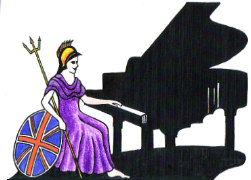Teachers, Accompanists and Piano Entertainers in the UK

UK Piano Page

Browse Locations Northern Ireland » County Londonderry » Portstewart
Orchards Farm
Iden
Rye, East Sussex TN31 7XB
England
Established since 1984, we are situated at the
18-20 Mochdre Industrial Estate
Newtown
Newtown, Powys SY16 4LE
Wales/Cymru
Based in the picturesque Mid-Wales countryside
38 Joel Street
Northwood Hills
Northwood, London HA6 1PA
England
We are importers and distributors of new and
Unit 2, Crown Centre
Bond Street
Macclesfield, Cheshire SK11 6QS
England
Offers a hand-picked selection of prestigious
Unit 2
Europa Enterprise Park
Midleton, County Cork
Republic of Ireland
We can supply all makes of new and reconditioned
Music Festival for performers and guests Our 10th
18-06-2022 12:30PM
The Morecambe Bay Piano Group was set up to extend
11-12-2021 01:00PM
The Morecambe Bay Piano Group was set up to extend
08-01-2022 01:00PM
The Morecambe Bay Piano Group was set up to extend
12-02-2022 01:00PM